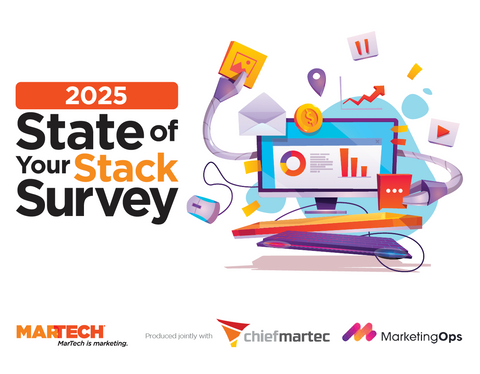In an era of accelerating digital transformation, companies have no choice but to equip themselves with new tools to remain competitive. SaaS (Software as a Service) tools have become a standard over the years due to their flexibility, rapid deployment, and often very attractive economic models. However, deploying a new SaaS tool does not guarantee its adoption. Many projects fail or stagnate due to a lack of genuine user engagement.
At SaaS Advisor, we assist numerous companies each year in selecting, deploying, and adopting SaaS solutions. Our experience is clear: three major obstacles consistently underlie adoption failures or delays.
In this article, we detail these three obstacles and provide concrete strategies to anticipate and overcome them.
1. Team Training and Onboarding Time: An Underestimated Obstacle
An Unmastered Tool Is an Abandoned Tool
The first barrier to adopting a SaaS tool lies in its onboarding process. Many companies mistakenly believe that a modern and intuitive interface will suffice to convince users. But the reality is often more nuanced: even the most user-friendly solutions require a learning curve, especially when they disrupt established habits.
Teams, already overwhelmed with work, often perceive the arrival of a new tool as an additional constraint. Without appropriate support, they can quickly become lost, frustrated, or even demotivated.
Common Mistakes Observed:
-
Absent or overly theoretical training: generic webinars or indigestible PDF guides do not replace concrete and personalized support
-
Underestimation of the time required to build competence: teams lack dedicated time slots for training, leading to resistance
-
Lack of on-the-ground support: when faced with initial obstacles, users abandon the tool due to a lack of prompt responses
Best Practices to Overcome This Obstacle:
-
Involve key users from the outset: engage operational teams in discovery and experimentation workshops for the tool
-
Implement a progressive and interactive training plan: combine video tutorials, live sessions, self-paced micro-training, and human assistance (internal champions, dedicated hotline, chat support)
-
Allocate dedicated time slots: schedule periods where teams can test the tool without production pressure
-
Establish adoption KPIs: monitor usage rates, training completion rates, and user feedback
Expert Tip:
Establish a network of internal "power users" or "ambassadors" who act as local relays. They will facilitate skill development and resolve obstacles in an agile manner.
2. Top-Down Decision Without Team Consultation: A Broken Adoption Lever from the Start
An Imposed Tool Is Rarely a Loved Tool
The second recurring obstacle: the tool is chosen solely by top management without consulting the operational teams who will use it daily.
This top-down approach creates a double negative effect:
-
Perception of a decision disconnected from on-the-ground reality
-
Frustration among teams who feel excluded and infantilized
Result: passive or active rejection, tool circumvention, or even invisible sabotage through inertia.
Warning Signs:
-
Announcement meetings in the "here is the new tool, period" mode
-
Absence of workshops or testing phases with users
-
Feedback from the field ignored or minimized
-
Typical phrases: "Another tool chosen by those who don't do our job daily"
Best Practices to Overcome This Obstacle:
-
Involve future users from the selection phase: conduct pilot tests, gather their feedback, and organize demonstrations tailored to their reality
-
Value ambassadors from field teams: include business representatives in the project's steering committee
-
Communicate with the user at the center: instead of saying "the executive committee decided," adopt communication focused on concrete benefits for users
-
Organize co-construction workshops: allow teams to customize certain features, interfaces, or workflows to strengthen their sense of ownership
Expert Tip:
Favor a "bottom-up" approach by starting from business irritants to bring out the need for a tool, rather than imposing a tool and then trying to convince users of its usefulness.
3. Lack of Perceived Added Value: The Tool That Changes Nothing... or Makes Things Worse
A Tool That Doesn't Provide Clear Gains Is Doomed to Oblivion
The third fundamental obstacle: if users do not quickly perceive the added value of the tool, they will stop using it.
The marketing promise of the publisher is not enough. What matters is the on-the-ground perception: real time savings, simplification of tedious tasks, visible improvement in results.
Too often, tools are chosen based on features that look good on paper but do not provide tangible daily benefits.
Common Causes:
-
Poor initial framing of business needs
-
Gadget features that complicate rather than help
-
Poor integration with existing tools (necessity for double entry, manual exports...)
-
Vague or absent adoption KPIs
Best Practices to Overcome This Obstacle:
-
Precisely frame the business need before any tool selection: which tasks do we want to simplify? Which irritants should we resolve?
-
Prioritize truly useful features: forget the "nice to have" that burden the experience
-
Implement a rapid field experimentation plan (Proof of Concept): before large-scale deployment, validate that the tool indeed provides the expected gains
-
Highlight quick wins in the first few weeks: share concrete cases where the tool saved time, improved a process, or reduced errors
Expert Tip:
Build with teams an evaluation grid of perceived benefits at 1 month, 3 months, and 6 months. This will allow objectifying gains and adjusting support or tool configuration if necessary.
Conclusion: SaaS Adoption Is Primarily a Human Issue Before Being a Technological One
The adoption of a SaaS tool cannot be decreed. It is built by placing users at the heart of the project, anticipating their obstacles, fears, and expectations.
The three obstacles described in this article are often combined:
An imposed tool by top management, without team consultation, with a complex onboarding process and no clear perceived benefits... This is the perfect recipe for a programmed failure.
Conversely, by adopting a participatory, progressive, and value-oriented approach, you maximize your chances of success.
At SaaS Advisor, we do everything to ensure that each SaaS project is above all a user adoption project. Our experts support you at every stage: framing, selection, deployment, training, adoption measurement, governance.





